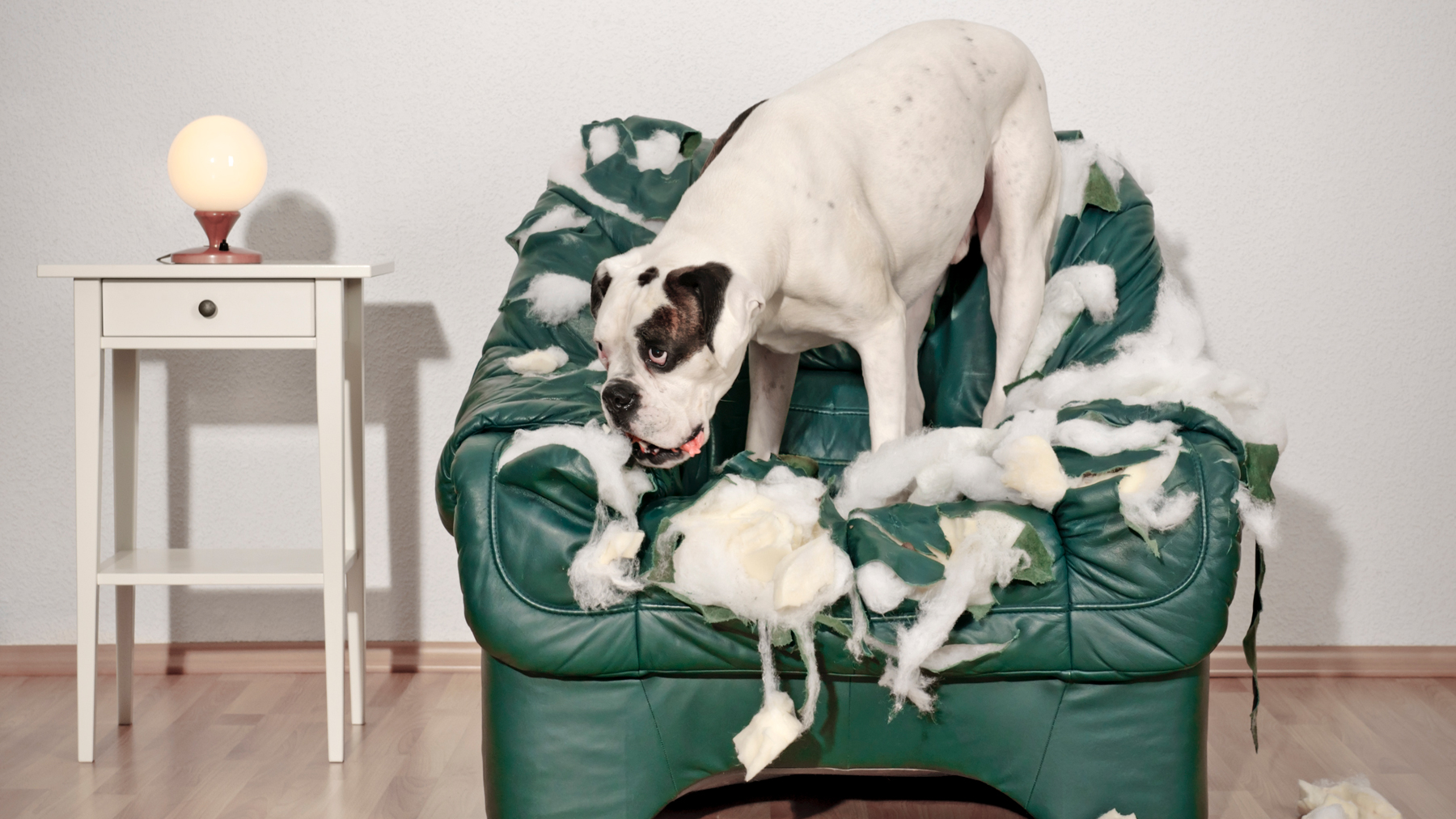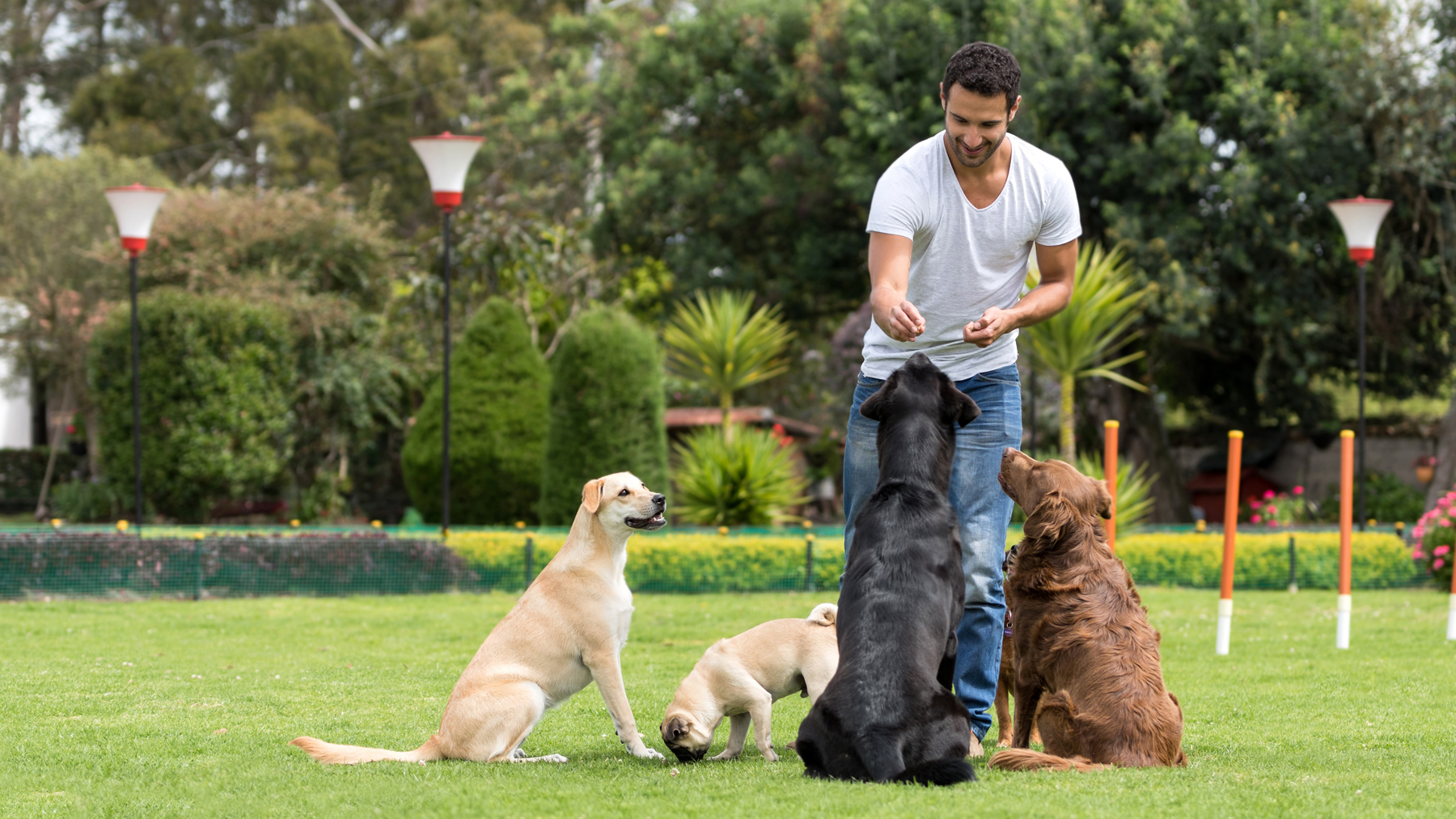How to deal with a badly behaved dog
Badly behaved dogs are more common than you think. We reveal typical ‘bad behaviors’ and different ways to resolve behavioral issues with your canine

A badly behaved dog can mean a variety of different problems and is also dependent on what is perceived as bad behavior by you and by society. Unwanted behavior can at times be obvious but others are smaller issues and less serious, jumping up is less of a problem than aggression towards other dogs for example.
Any behavior exhibited by your dog considered bad or unwanted is likely causing you (and your dog) some form of stress and anxiety, but their frustrating habits can be changed and hope must not be lost. No dog is perfect and becoming upset, angry or resentful of their behavior is fruitless. It is far better to remain at ease and take charge of the situation. Dogs are pack animals with a leader after all. Many unwanted traits can be solved with simple reward training or re-visiting original techniques you may have used previously. More serious behaviors may take longer to solve but are usually rectifiable once the right technique and plan are found for your specific situation.
If you’ve exhausted the longest lasting dog chews trying to tame your badly behaved dog, don’t sweat it! Keep reading to find out what dog behaviors are deemed bad, how to tell if your pup needs extra help and the different training methods recommended for badly behaved dogs.
What behaviors are deemed bad or unwanted?
A staggering 72 – 85% of dog owners are estimated to have a dog who displays a form of unwanted or bad behavior, according to the Frontiers in Veterinary Science journal. Is your dog one of them?
The American Society for the Prevention of Cruelty to Animals reports aggression is the most common bad behavior seen in the USA and the most serious but many other behaviors, picked up over time, cause daily distress.
Whilst this is not an exhaustive list, the following behaviors can be viewed as bad, frustrating or unwanted:
- Aggression
- Jumping up
- Guarding - food, the sofa, human beds (their sleeping area)
- Howling
- Dog won't stop barking
- Separation anxiety
- Chewing – furniture, skirting boards, their bedding and other household objects
- The ripping up/tearing of human clothes or eating of them, for example socks
- Mounting other dogs, people’s legs or furniture
- Pulling on the lead
- Poor recall
- Toileting in the house
- Attacking the mail or issues with the mailman
- Fears, for example fireworks, traveling in a car
- Escaping or running away
- Stealing food
- Seeking attention
How to tell if your dog needs help?
Any behavior you acknowledge as annoying, destructive or unwanted requires addressing and correcting. Resolving the pattern or issue not only makes you feel more confident and relaxed, but it also relaxes your dog. Smaller problems, such as lead pulling, could be occurring because your dog has simply forgotten they are not supposed to do this or the initial training wasn’t fully ingrained. These can often be erased by one of the methods outlined below. Problems that are more complex and chronic, or if your methods at home aren't working, often require a little extra help from an expert.
Get the best advice, tips and top tech for your beloved Pets

What different types of training are there to improve behavior?
1) Positive reward training
Positive reinforcement is a simple training technique in which the desired behavior is rewarded with something that your dog considers positive — for some, a treat or playtime; for others, a cuddle. For example, if they listen to your command to not jump up at a visitor, they are rewarded with a positive treat. The unwanted behavior is ignored, i.e., if your dog does jump up at a visitor, they do not get a treat nor any attention. Any punishment or negative behavior directed at your dog is still considered attention by them. Although it is negative attention, it means your dog is still receiving attention, which reinforces the trait you want to eliminate, thus perpetuating the cycle.
Clicker training for dogs is another relatively easy method belonging to the positive reinforcement group of methods and can help with smaller issues such as recall, dropping items and simple commands like sit or wait.
2) Training classes
Training classes are always available locally and nationally, both for puppies and adults; most have the option for group training or private classes. Some trainers may come to your home or walking area if you feel this option will work better. The trainer helps teach your dog as well as you as the owner.
3) Certified behaviorists
If no other methods are working or the problem is more complex, then a trained and certified behaviorist might be the way to go. They work one-on-one with you and your dog to identify the root cause of the problem and then develop a plan. This is the most costly option but the expertise is profoundly helpful.
Where can you get help for badly behaved dogs?
1) Veterinary practices or hospitals
Ask your local veterinarian for approved training classes or canine behaviorists, whilst they may not be able to recommend a specific one, they will have a range of qualified experts for you to choose from.
It is also worthwhile to have your dog checked over by your veterinarian to rule out any underlying medical conditions which could be causing certain types of behaviors such as aggression. Pain, for example, can change a dog’s behavior, and old age can bring on confusion particularly if sight and hearing are affected.
2) Online
There are plenty of good behavior guides on the internet if you want to rectify this yourself or top up previous techniques, like our guide on how to stop a dog from barking in their crate. The American Kennel Club has an extensive section on training and programs you can join or the PDSA has a free basic training guide available.
Sites like YouTube and social media are full of training advice and techniques but do your due diligence and ensure they are qualified teachers and right for you.
3) Train classes and behaviorists
Most countries have organizations listing certified trainers and behaviorists so you can comfortably source an expert. In the USA, you can check out the American Kennel Clubs section, the American Society for the prevention of Cruelty to Animals or the American College of Veterinary Behaviorists
In the UK, you can find local trainers at the Association of Local Pet Dog Trainers.
Annaliese qualified as a veterinary nurse from Edinburgh and went on to attain a diploma in advanced veterinary nursing in surgery from London. Throughout this time, she worked in both small and mixed veterinary practices and gained head nurse status. Responsible for training other veterinary nurses she also ran the nursing department, nurse clinics, and patient care protocols.
She has looked after 1,000s of patients and owners and created new higher standard nursing regimes, whilst specializing in surgery and anesthesia. After being asked to co-author multiple veterinary nursing textbooks, Annaliese continued to write for further mainstream publications in the UK and USA and after twenty-plus years in both the veterinary and pet care professions, she hung up her scrub suit and now writes full-time.

